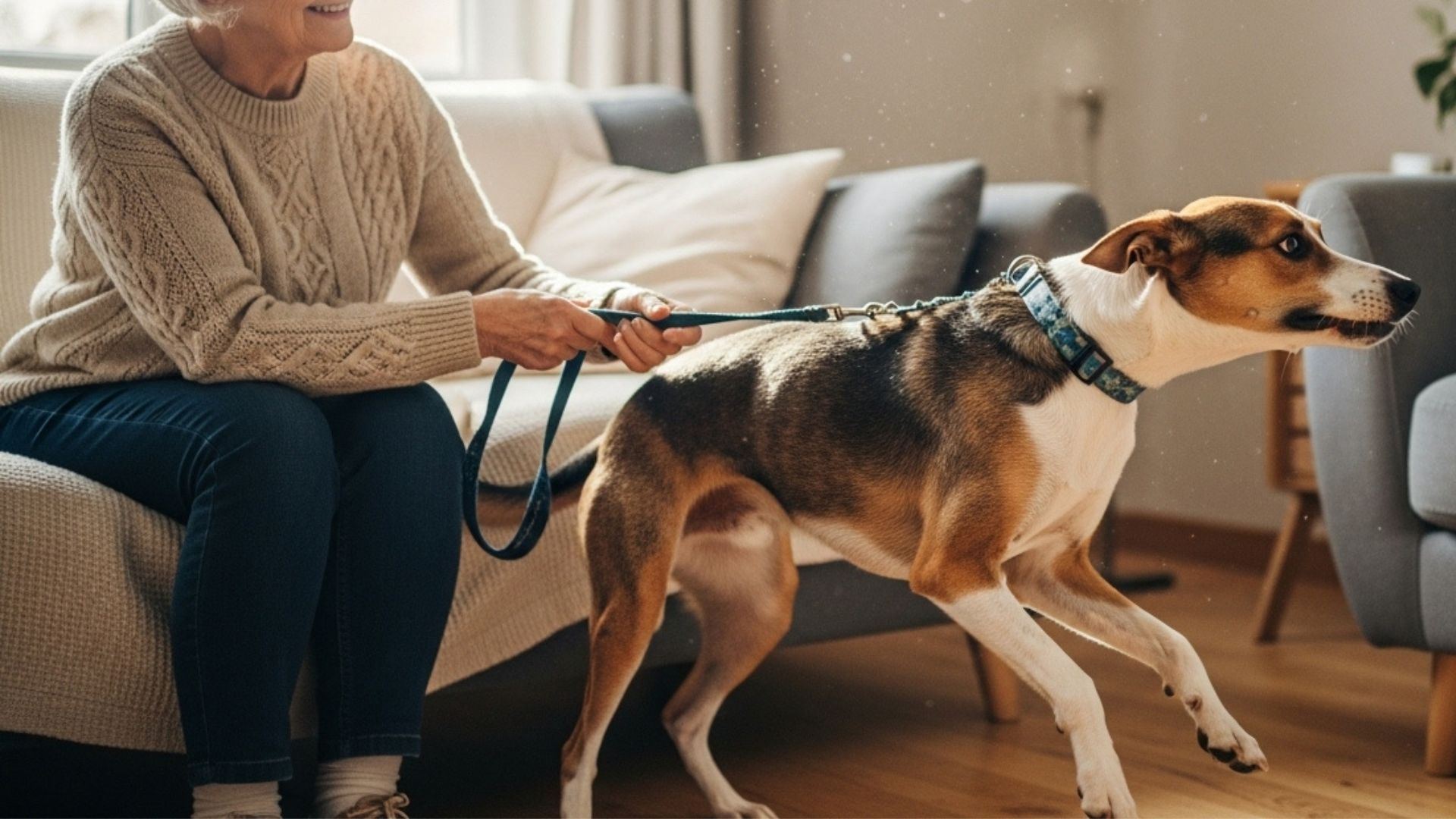Are you a senior living alone and thinking about getting a furry friend?
The idea of a loyal companion waiting for you at the door sounds comforting, doesn’t it?
Imagine coming home after a quiet day and being greeted by a wagging tail and loving eyes. Pets can bring joy, companionship, and even improve mental and physical health for older adults.
In fact, studies show that people of all ages find that having a pet improves their mood, lowers stress, and eases loneliness. But not every dog is a perfect match for senior citizens.
Some breeds have high energy levels or require more mental and physical challenges than an older adult can comfortably manage.
Choosing the wrong potential dog can turn most dogs into a source of stress rather than a source of companionship. Daily exercise, grooming needs, obedience training, and mental stimulation can become overwhelming if the dog interacts with other animals or is too active or large.
In this article, we will explore the best dog breeds to avoid for seniors living alone. These different dog breeds may seem loving and fun, but their energy, training needs, and exercise requirements can pose challenges for older adults.
Best Dog Breeds To Avoid For Seniors Living Alone
1. Siberian Husky
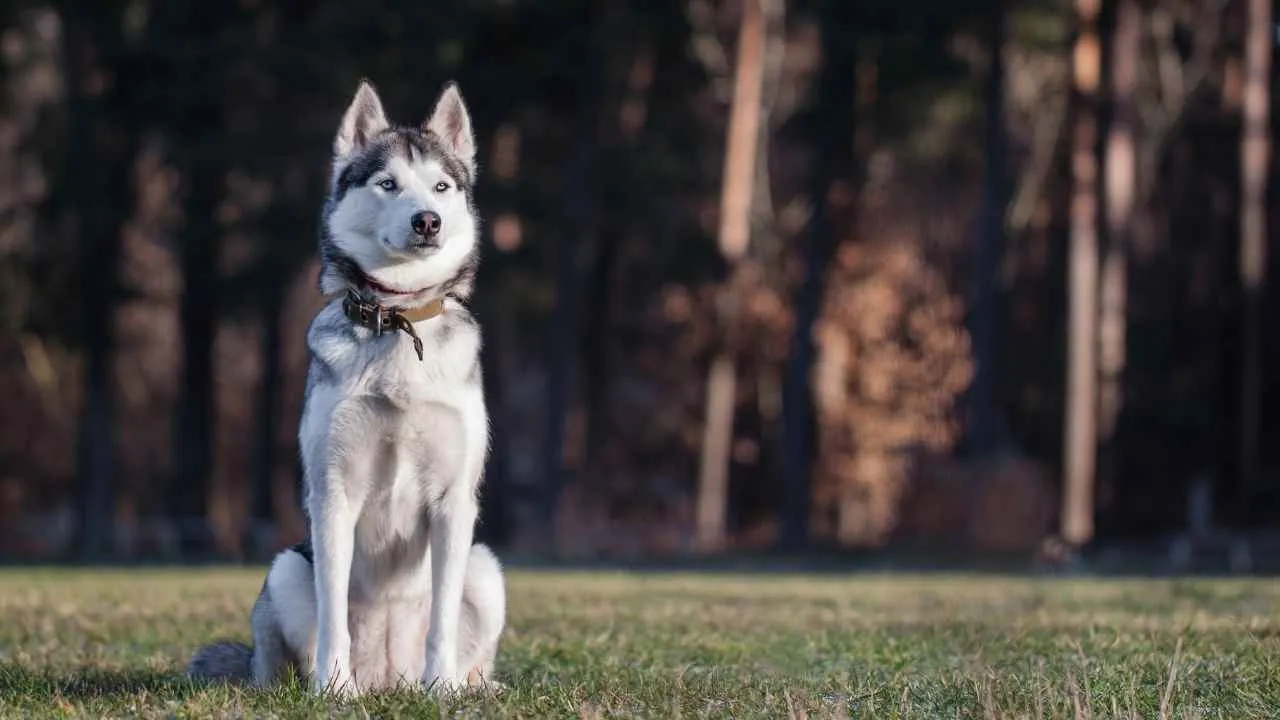
Ever imagine chasing a dog 20 minutes into a brisk walk—because it’s just getting started?
As noted by the American Kennel Club, the Siberian Husky was bred to pull sleds across frozen wilderness, so it’s no surprise this breed boasts some serious stamina and energy.
For a senior seeking companionship, a dog that demands regular exercise, bursts of play, and consistent mental and physical stimulation can quickly turn into a source of fatigue rather than joy.
The Husky’s escape‑artist instincts are also well‑documented—they’ll probe for gaps, climb fences, or dig under barriers if left understimulated or unsupervised.
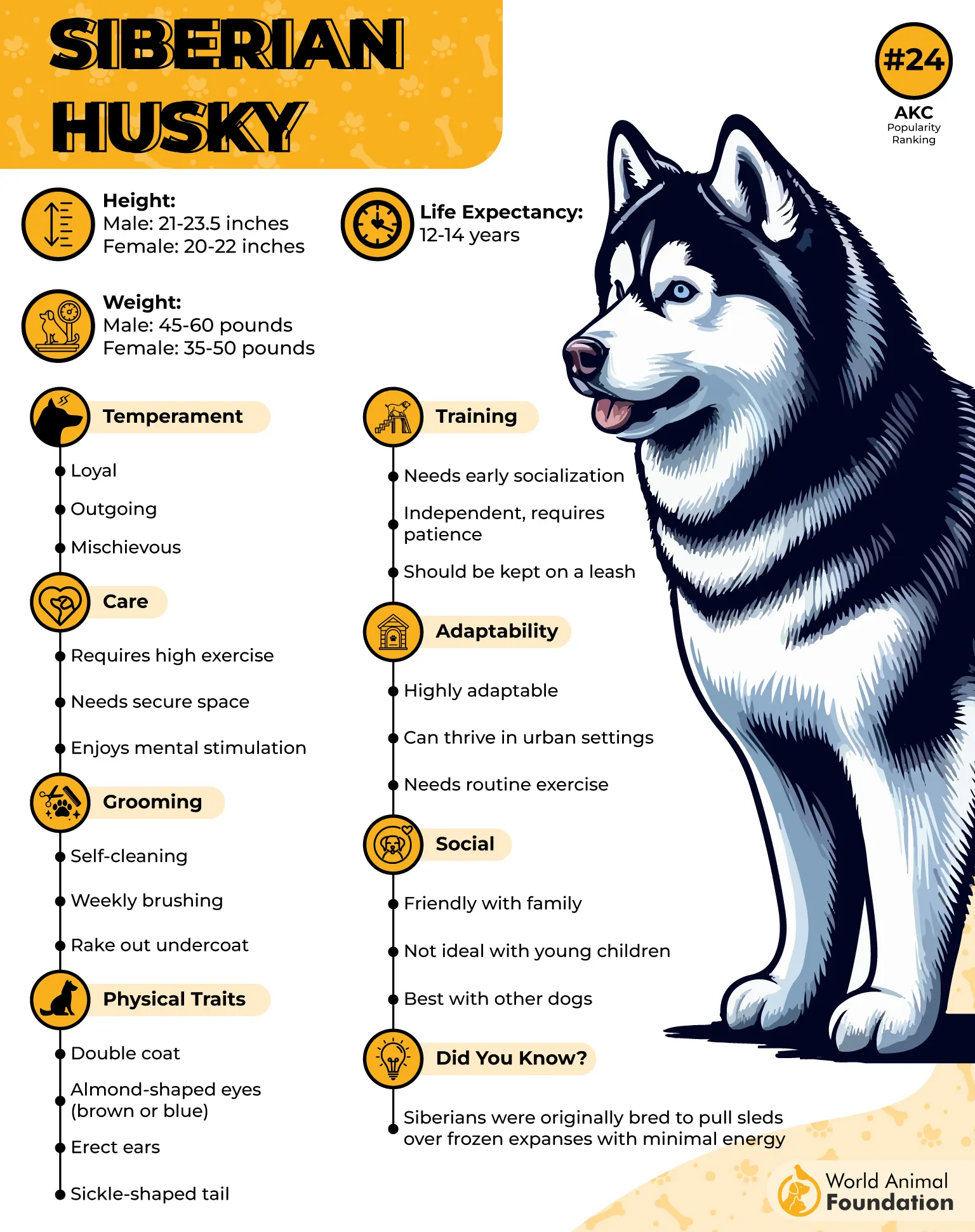
On top of that, the Husky’s thick double coat needs regular grooming to keep the coat healthy, especially during shedding season. Combined with their thick double coat, which sheds loose hair seasonally, they become less of a lap dog and more of a project dog.
For an older dog owner looking for a gentle, low‑maintenance friend, this high‑energy breed often does more work than companionship.
Fun fact
The Siberian Husky needs at least an hour of vigorous activity every day, and without it, they are prone to boredom, destruction, or mischievous escapes.
2. Border Collie
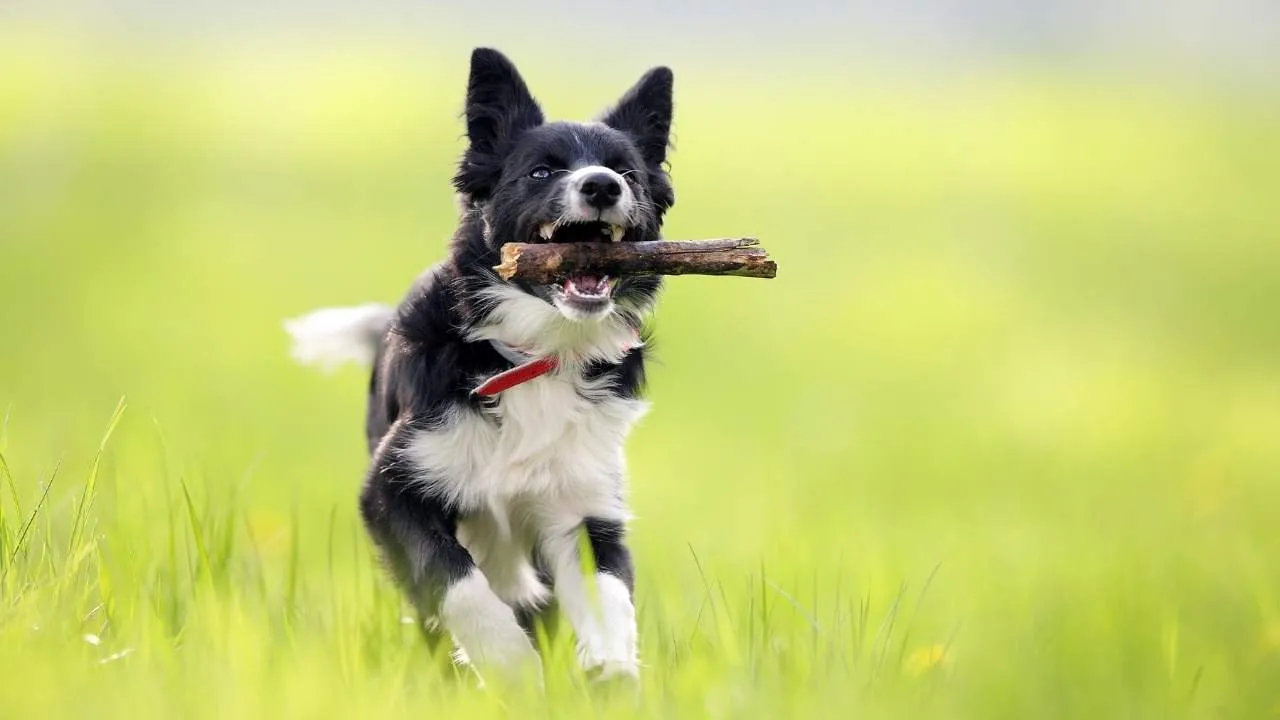
Imagine coming home to find your “calm companion” barking at every breeze and racing around the living room at sunset—surprising, right?
The Border Collie is widely recognized as one of the most intelligent dogs, which makes them challenging for seniors seeking a calm companion.
Because Border Collies require “a lot of activity and mental stimulation,” they are best suited for active homes with experienced owners—not necessarily ideal for older adults living alone.
This breed’s herding dog instinct sits deep in its DNA. Border Collies are a high‑energy herding breed, and they need a job to do. If you don’t provide mental and physical activity that your dog needs, the dog may invent its own games (which can include habitual behaviour like barking, digging, and chewing).”
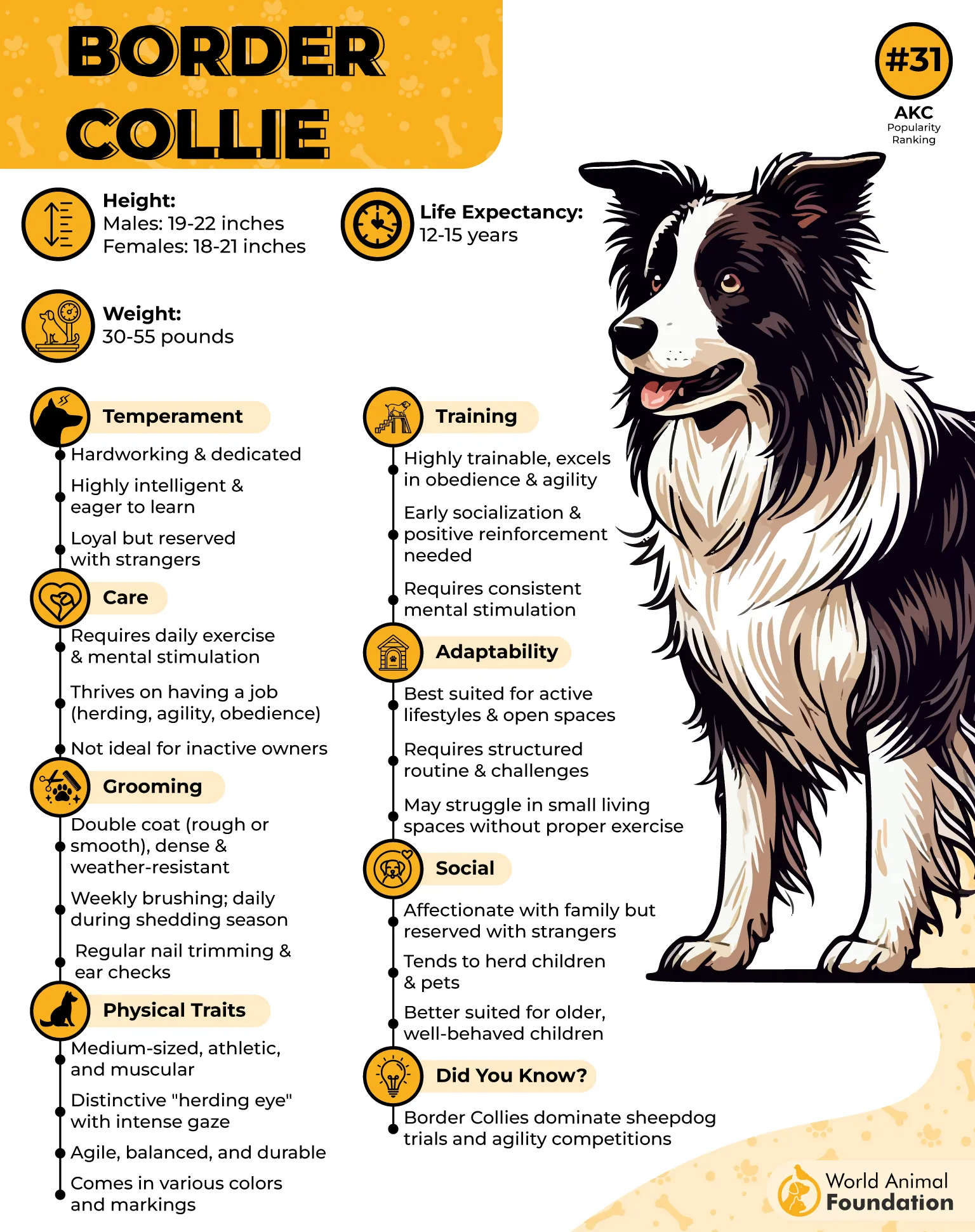
For a senior dog owner who may not have the time or physical ability to provide multiple hours of structured play, agility, or herding‑style tasks each day, a Border Collie’s needs can quickly turn rewarding pet ownership into a burden.
Their strong instincts, high energy, and need for mental stimulation and proper training mean they thrive with younger, active handlers rather than more relaxed, older adults.
Fun fact
Border Collies top intelligence rankings in dogs—they’re often cited as the world’s smartest breed.
3. Dalmatian

Ever felt like you need to sign up for a mini-marathon before walking your dog?
The Dalmatian is built for activity — think long sprints, chasing, and tugging on reins, just like their ancestors did beside horse-drawn carriages. Dalmatians can be very high‑energy dogs and can easily get into mischief if they don’t have enough opportunity for physical and mental exercise.”
For a senior dog owner seeking a calm and great companion, this means their daily routine may require considerable effort. For seniors, short strolls or moderate exercise will not meet the Dalmatian’s activity needs.
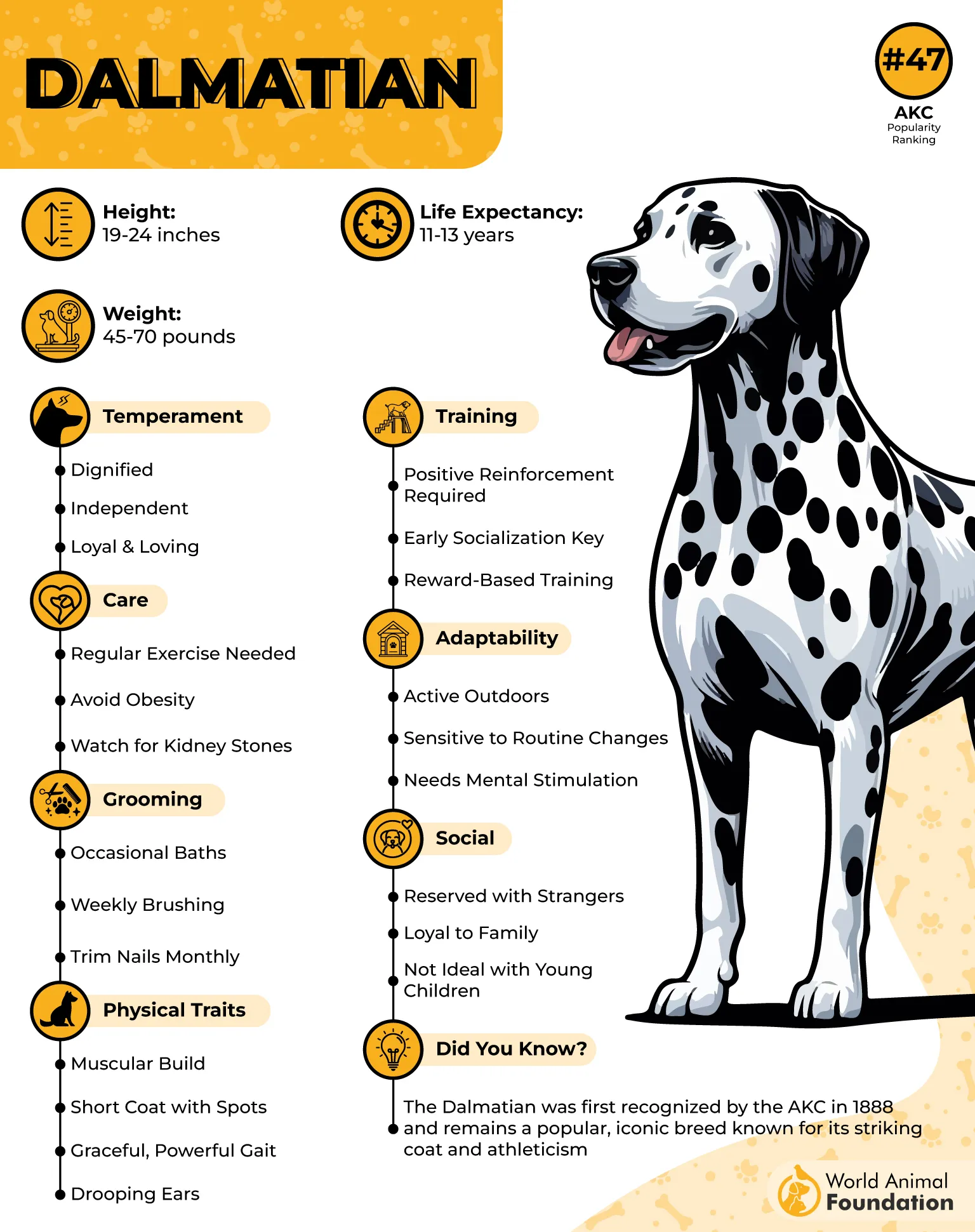
Moreover, Dalmatians bring added considerations: their athletic build makes them larger dogs than many expect, and they’re prone to specific health issues, such as urinary stones and deafness.
For older adults with a slower pace or limited mobility, keeping up with such a dog can lead to strain rather than the gentle, low‑stress companionship they may hope for.
Fun fact
According to the PDSA, Dalmatians typically require at least two hours of exercise per day to stay happy and well-behaved.
4. Rottweiler

Ever feel like you’ve adopted a Swiss-army knife instead of a gentle lap companion?
The Rottweiler is a large, muscular breed with a protective nature and serious strength.
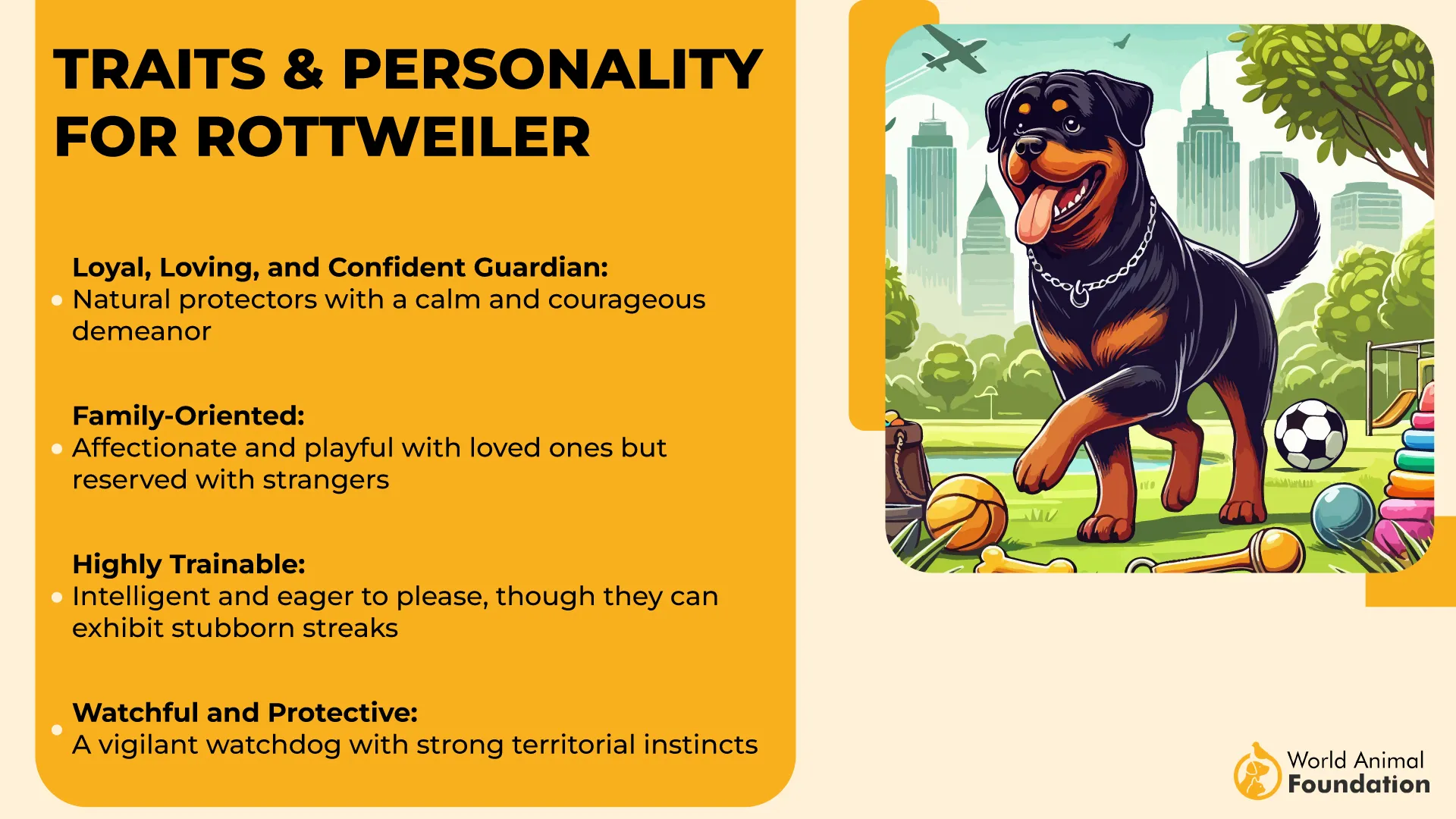
They are built for tasks and often require regular exercise, combined with consistent obedience training and regular physical and mental stimulation — demands that may be challenging for older adults with limited mobility or a slower pace.
Rottweilers require more attention than many other breeds, as they need plenty of exercise and mental stimulation. Their strength alone can be a challenge: if a senior slips or missteps while managing a powerful dog, the risk of injury increases.
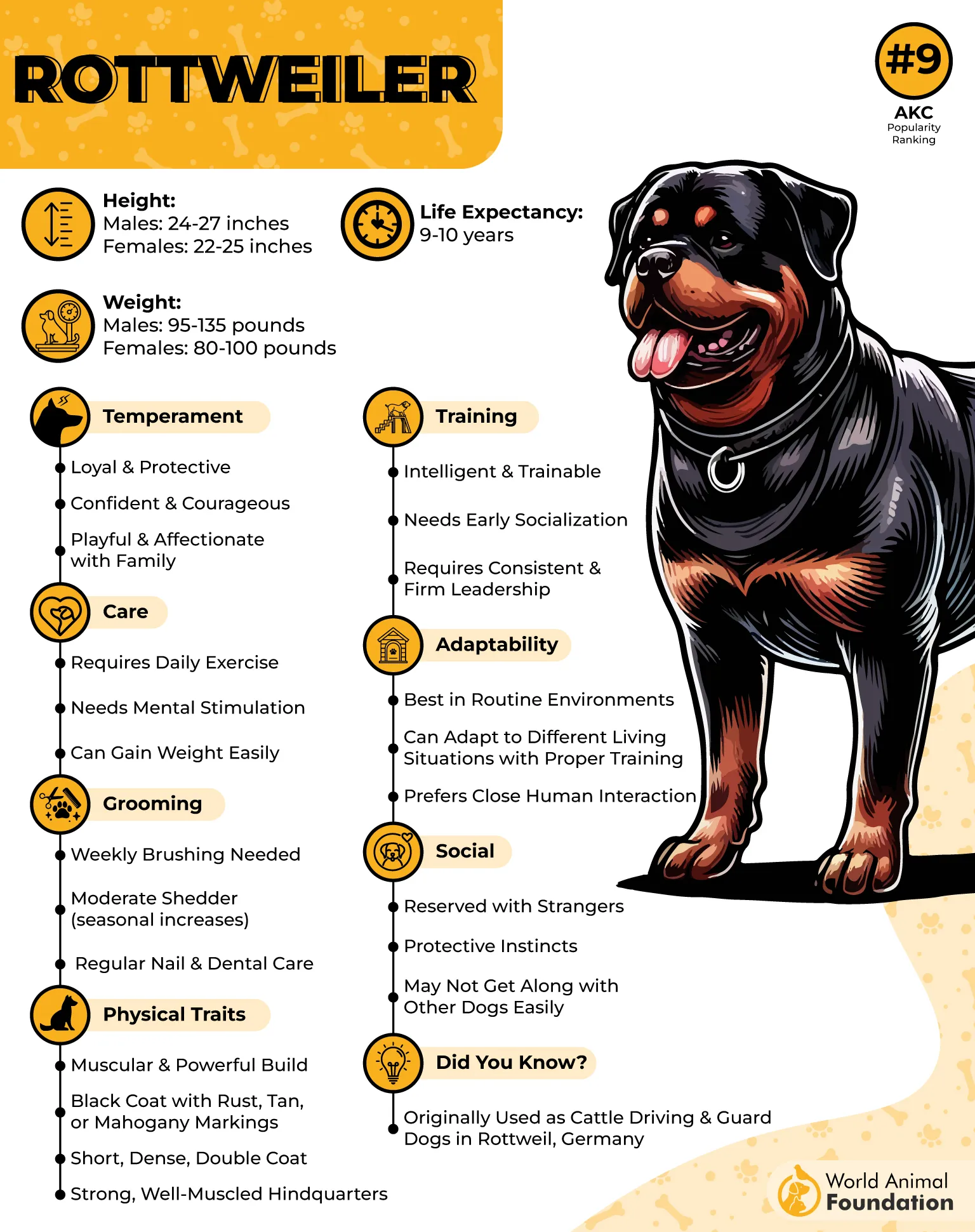
Additionally, Rottweilers have specific care needs. Their size means joint and mobility problems are more common as they age, and they can easily become overweight if their exercise drops, which compounds the physical burden for their owner.
Rottweilers must live in an environment where their size and high energy levels are matched by the owner’s ability to keep up with them. With this in mind, Rottweilers are among the “worst dog breeds for seniors living alone.”
Fun fact
Rottweilers can weigh more than 110 pounds, and if not given an appropriate outlet for their energy, they may develop boredom‑driven behaviours like chewing or pacing.
5. Belgian Malinois

Ever bring home a “quiet companion” only to realise you’ve actually adopted a hyper‑aware athlete in fur?
The Belgian Malinois is intensely driven and built for high-performance roles. This breed is “strong, agile, well‑muscled, alert, and full of life.” For a senior dog owner seeking a calm lap dog, this level of intensity translates into significant demands for daily mental and physical exercise.

Without that outlet and proper socialization, behaviour problems often develop—such as destructiveness or wandering—and the dog can become more of a project than a peaceful companion.
Moreover, this extremely active breed expects structured activities, obedience training, and an owner who can keep up.
Malinois are best suited for experienced pet owners who can keep them properly trained and mentally engaged. For older adults, especially those living alone or managing physical challenges, the Malinois can bring more strain than support.
Fun fact
The Belgian Malinois is so sought after by police, military, and search‑and‑rescue teams that many are trained for jobs far beyond the home—yet the same drive that makes them outstanding workers means they’re far from a low‑maintenance dog.
6. Weimaraner

Ever bring home a sleek silver ghost and suddenly find you’ve adopted a marathon runner in fur?
The Weimaraner is a large, athletic breed with exceptional stamina. They are very high-energy and thrive when given ample exercise and activity, which can make them challenging for seniors living alone who are looking for active dogs.
For a senior or older adult living alone, keeping up with the daily demands of this energetic breed can pose physical and mental challenges.
Their need for psychological and physical stimulation is not small—without enough outlets, they may turn to destructive behaviour or develop anxiety. Additionally, Weimaraners don’t like being left alone for long periods.

Their strong bond‑forming nature means a senior who’s home alone part of the day may find the dog becomes unhappy, restless, or anxious. With this breed’s high energy, large size, and strong activity needs, they are often listed among the worst dog breeds for seniors living alone.
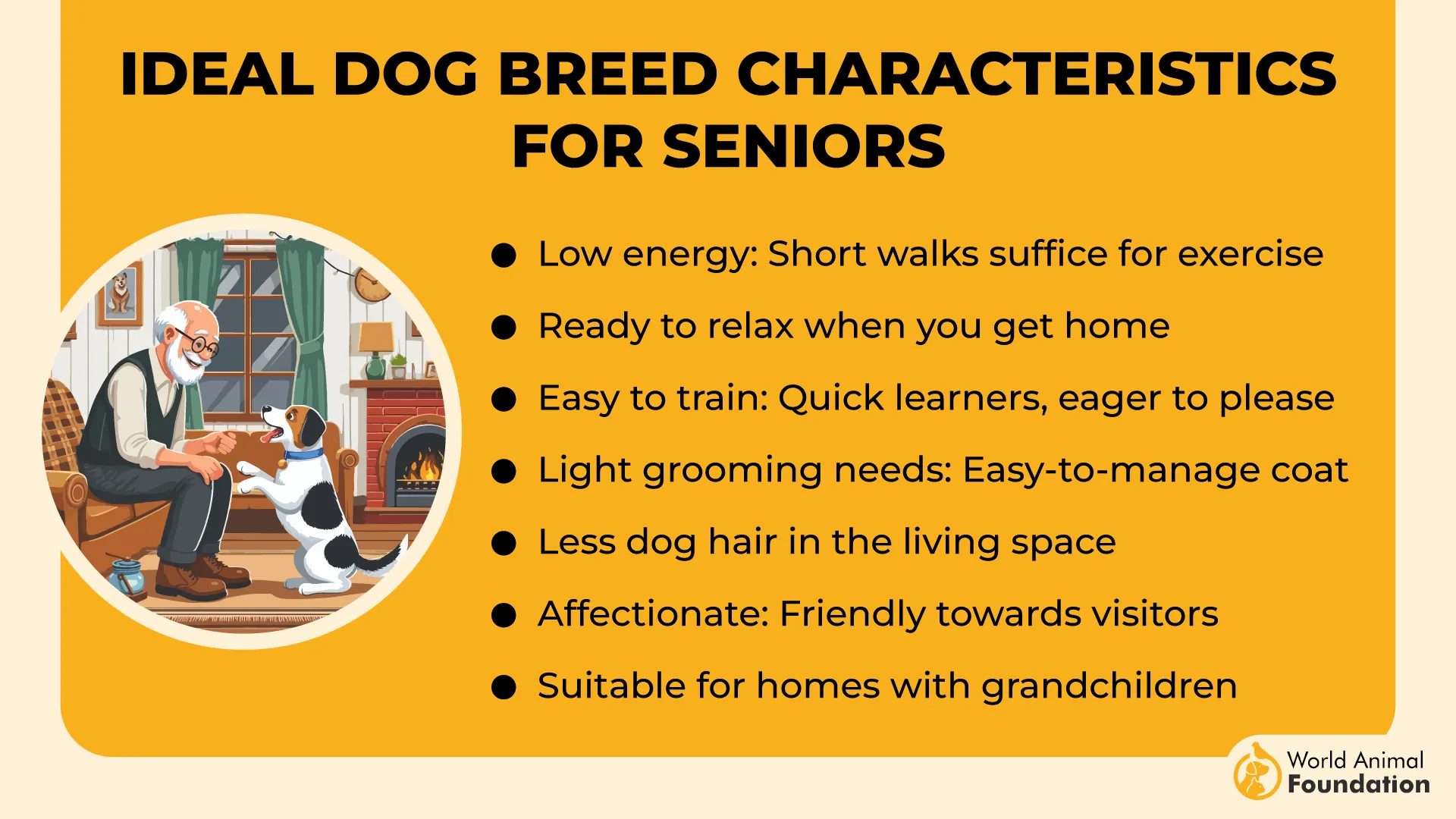
Fun fact
The Weimaraner was originally bred in Germany to track large game like boar and deer, meaning their body and mind were built for work—and they still expect meaningful “jobs” today.
7. Jack Russell Terrier
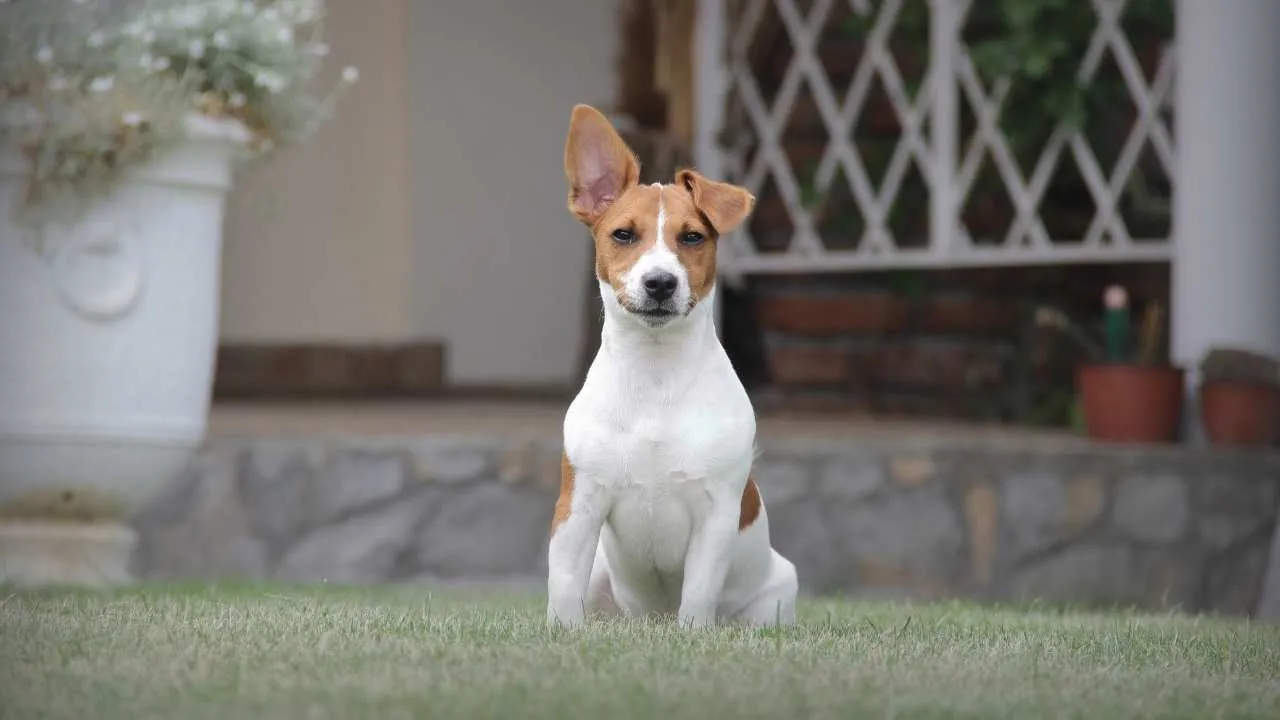
Ever feel like your “small dog” needs a personal trainer instead of a relaxing lap companion?
The Jack Russell Terrier is spirited, tenacious, and built for chasing, digging, and nonstop action. These dogs are “alert, curious, and seemingly always on” with a strong prey drive and a high need for activity and challenge.
This means they require not only physical play but also serious mental stimulation—such as puzzle toys, scent games, and exercise daily—to stay happy and well-behaved.

For senior citizens living alone, this can be a significant challenge: providing regular exercise, mental stimulation, and supervision becomes more difficult when mobility, energy, or time are limited.
Without those outlets or early socialization, the Jack Russell can turn its energy into barking, digging, or escaping behaviors.
The intense drive and persistence of this breed make them more suitable for younger, experienced pet owners rather than older adults seeking a gentle, low‑maintenance companion.
Fun fact
As noted by Wikipedia, despite their small size, Jack Russell Terriers regularly compete in high‑intensity dog sports like agility and flyball—and without enough stimulation, they’ll invent their own games (which may involve your shoes!).
Conclusion
Choosing the right dog is crucial for seniors living alone.
High-energy breeds, such as Siberian Huskies, Border Collies, and Weimaraners, can be overwhelming due to their high energy levels and strong instincts, which require extensive daily exercise, mental and physical stimulation.
For senior citizens, it’s safer to consider low-maintenance dogs or lap dogs with a lazy nature, such as the Cavalier King Charles Spaniel or Shih Tzu.
These breeds are easier to manage, often require minimal grooming, provide companionship without added stress, and support both physical and mental health. Remember, proper care, long walks, and engaging activities are essential for any dog, regardless of breed.
By selecting a dog that matches energy and lifestyle, seniors can enjoy the many benefits of pet ownership while staying safe and happy.


